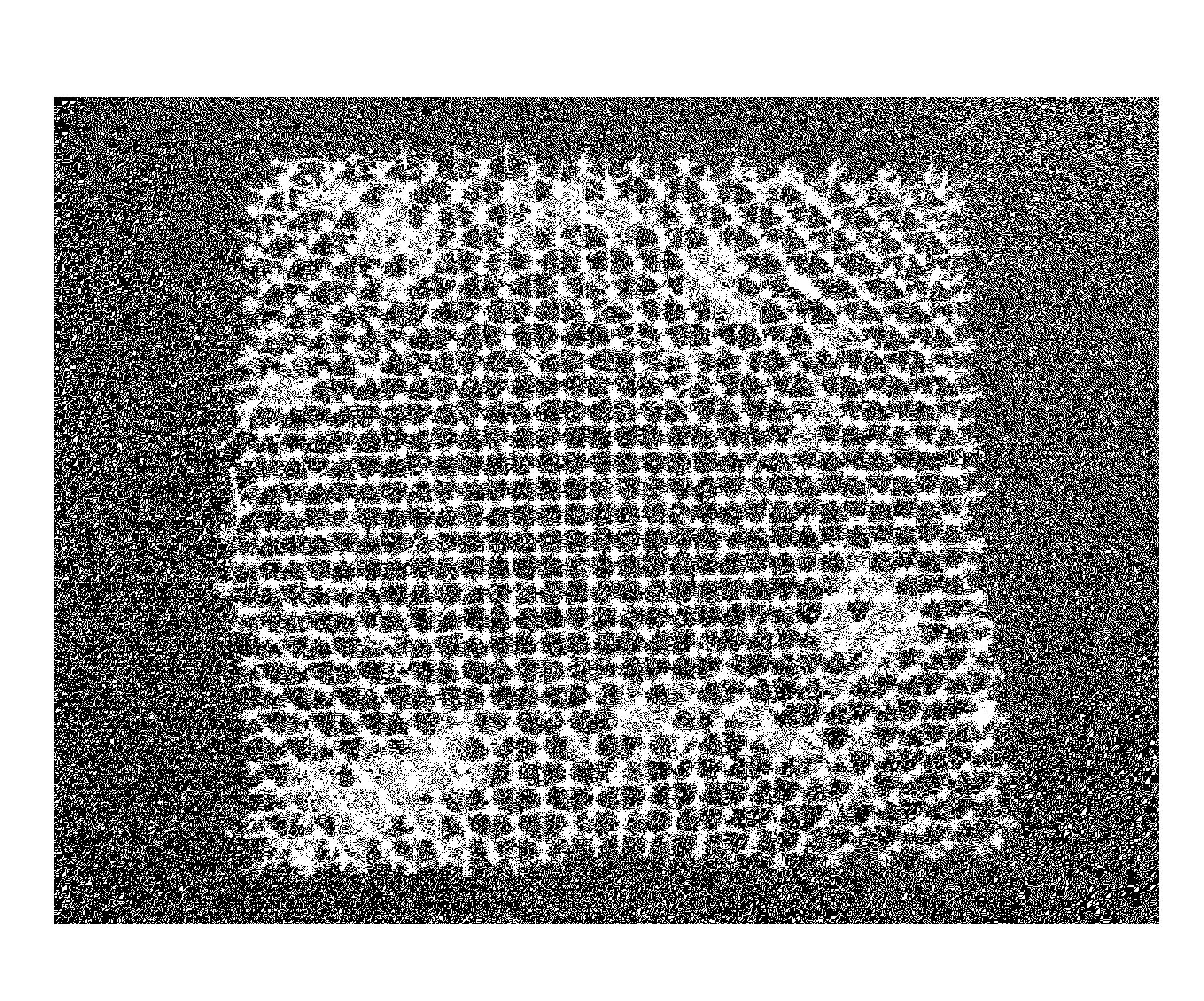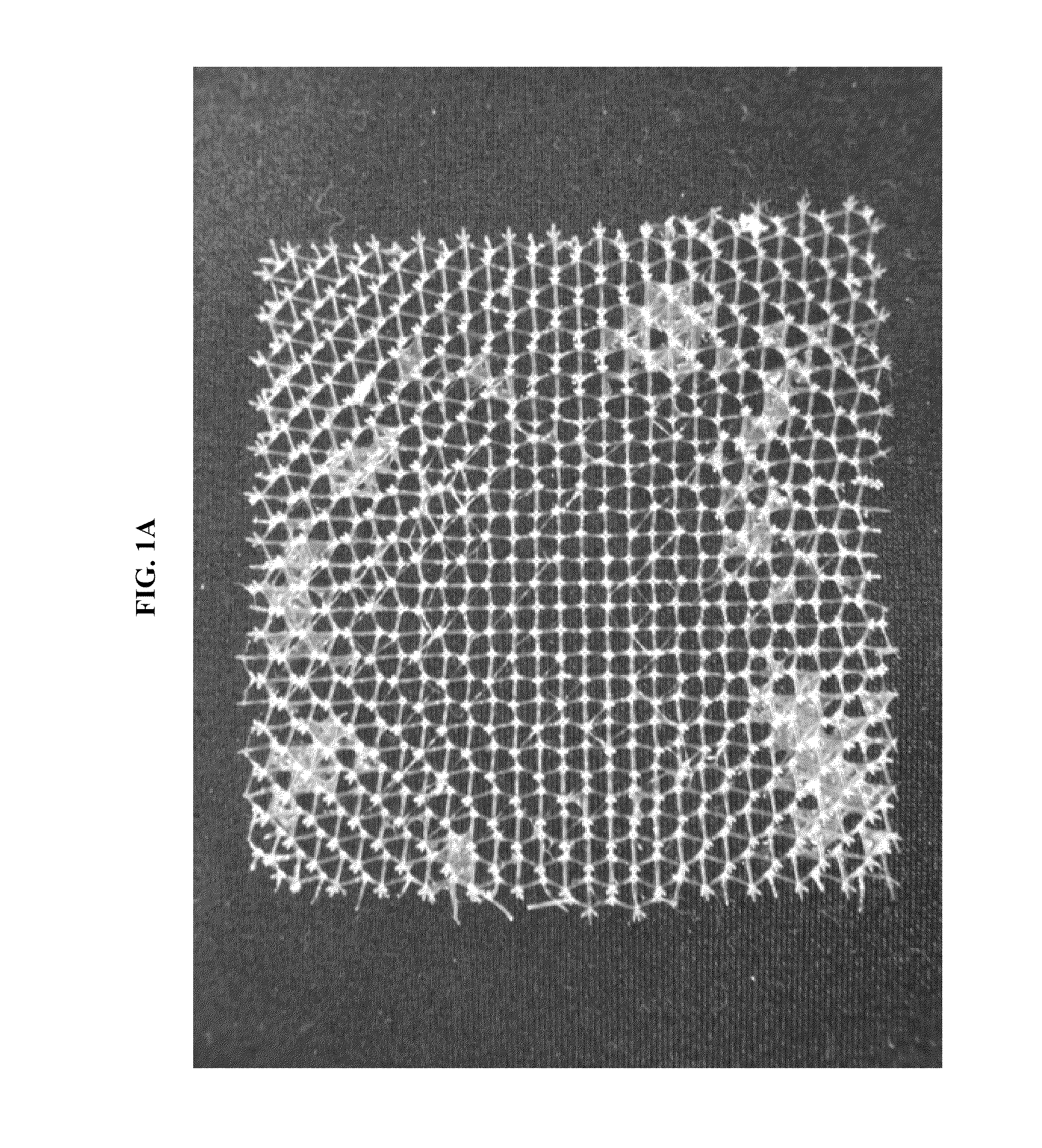Unsaturated monomeric formulations for the fabrication of polymeric waveguides
a technology of monomerization and polymerization, applied in the field of polymerization waveguide and monomerization formulation, can solve the problems of limited monomer range, limited polymerization system range, limited polymerization system structure,
- Summary
- Abstract
- Description
- Claims
- Application Information
AI Technical Summary
Problems solved by technology
Method used
Image
Examples
example 1
[0125]In this Example 1, tris(2-hydroxyethyl)isocyanurate triacrylate (19.73 g, Cat#SR368) and dipentaerythritol pentaacrylate (21.0 g, Moles, Cat#SR399) are weighed and thoroughly mixed in a container. 2-2-Dimethoxy-2-phenylacetophenone (20 mg, 0.05 wt %) is weighed out and dissolved in a small volume of acetone before being dispersed into the resin with vigorous mixing. The container is shielded from stray light with foil and placed in a vacuum chamber for 30 min. The monomer formulation is then loaded into a mold and a quartz mask with 225-μm apertures spaced at 2.25 mm in a square array is placed above the resin. The mask and resin combination are exposed to UV light with about 9 mW / cm2 at the resin surface for 30 sec. Following exposure, the unreacted resin is drained and the micro-truss structure rinsed with toluene. The micro-truss is then placed in an 85° C. oven overnight to dry.
[0126]FIGS. 1A and 1B show photographic images of the micro-truss fabricated in this Example 1. ...
example 2
[0128]In this Example 2, tris(2-hydroxyethyl)isocyanurate triacrylate (17.0 g, Cat#SR368) and trimethylolpropane triacrylate (17.0 g, Moles, Cat#SR351) are weighed and thoroughly mixed in a container. 2-2-Dimethoxy-2-phenylacetophenone (20 mg, 0.05 wt %) is weighed out and dissolved in a small volume of acetone before being dispersed into the resin with vigorous mixing. Tertbutylhydroquinone (1.7 mg, 0.005 wt %) and tetraethylthiurian disulfide (1.7 mg, 0.005 wt %) are also dissolved in a small volume of acetone. The container is shielded from stray light with foil and placed in a vacuum chamber for 30 min. The monomer formulation is then loaded into a mold and a quartz mask with 225-μm apertures spaced at 2.25 mm in a square array is placed above the resin. The mask and resin combination are exposed to UV light (about 9 mW / cm2 at the resin surface) for 25 sec. Following exposure, the unreacted resin is drained and the micro-truss structure rinsed with toluene. The micro-truss is th...
example 3
[0130]In this Example 3, tris(2-hydroxyethyl)isocyanurate triacrylate (15.8 g, Cat#SR368), polyethylene glycol diacrylate (16.0 g, Moles, Cat#SR259), and dipentaerythritol pentaacrylate (8.4 g, Moles, Cat#SR399) are weighed and thoroughly mixed in a container. 2-2-Dimethoxy-2-phenylacetophenone (20 mg, 0.05 wt %) is weighed out and dissolved in a small volume of acetone before being dispersed into the resin with vigorous mixing. The container is shielded from stray light with foil and placed in a vacuum chamber for 30 min. The monomer formulation is then loaded into a mold and a quartz mask with 225-μm apertures spaced at 2.25 mm in a square array is placed above the resin. The mask and resin combination are exposed to UV light (about 9 mW / cm2 at the resin surface) for 40 sec. Following exposure, the unreacted resin is drained and the micro-truss structure rinsed with toluene. The micro-truss is then placed in an 85° C. oven overnight to dry.
[0131]FIGS. 5A and 5B show photographic i...
PUM
| Property | Measurement | Unit |
|---|---|---|
| wavelengths | aaaaa | aaaaa |
| wavelengths | aaaaa | aaaaa |
| wavelength | aaaaa | aaaaa |
Abstract
Description
Claims
Application Information
 Login to View More
Login to View More - R&D
- Intellectual Property
- Life Sciences
- Materials
- Tech Scout
- Unparalleled Data Quality
- Higher Quality Content
- 60% Fewer Hallucinations
Browse by: Latest US Patents, China's latest patents, Technical Efficacy Thesaurus, Application Domain, Technology Topic, Popular Technical Reports.
© 2025 PatSnap. All rights reserved.Legal|Privacy policy|Modern Slavery Act Transparency Statement|Sitemap|About US| Contact US: help@patsnap.com



